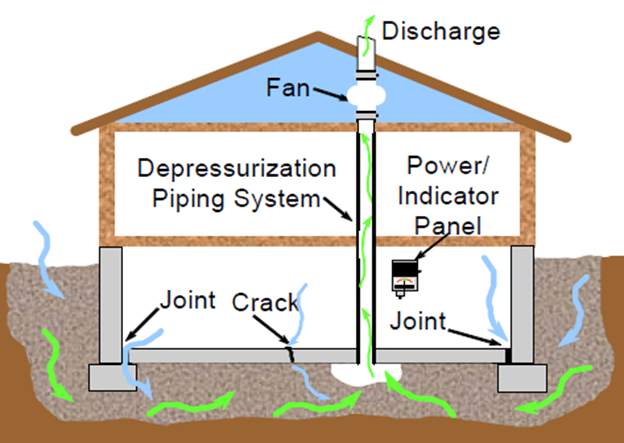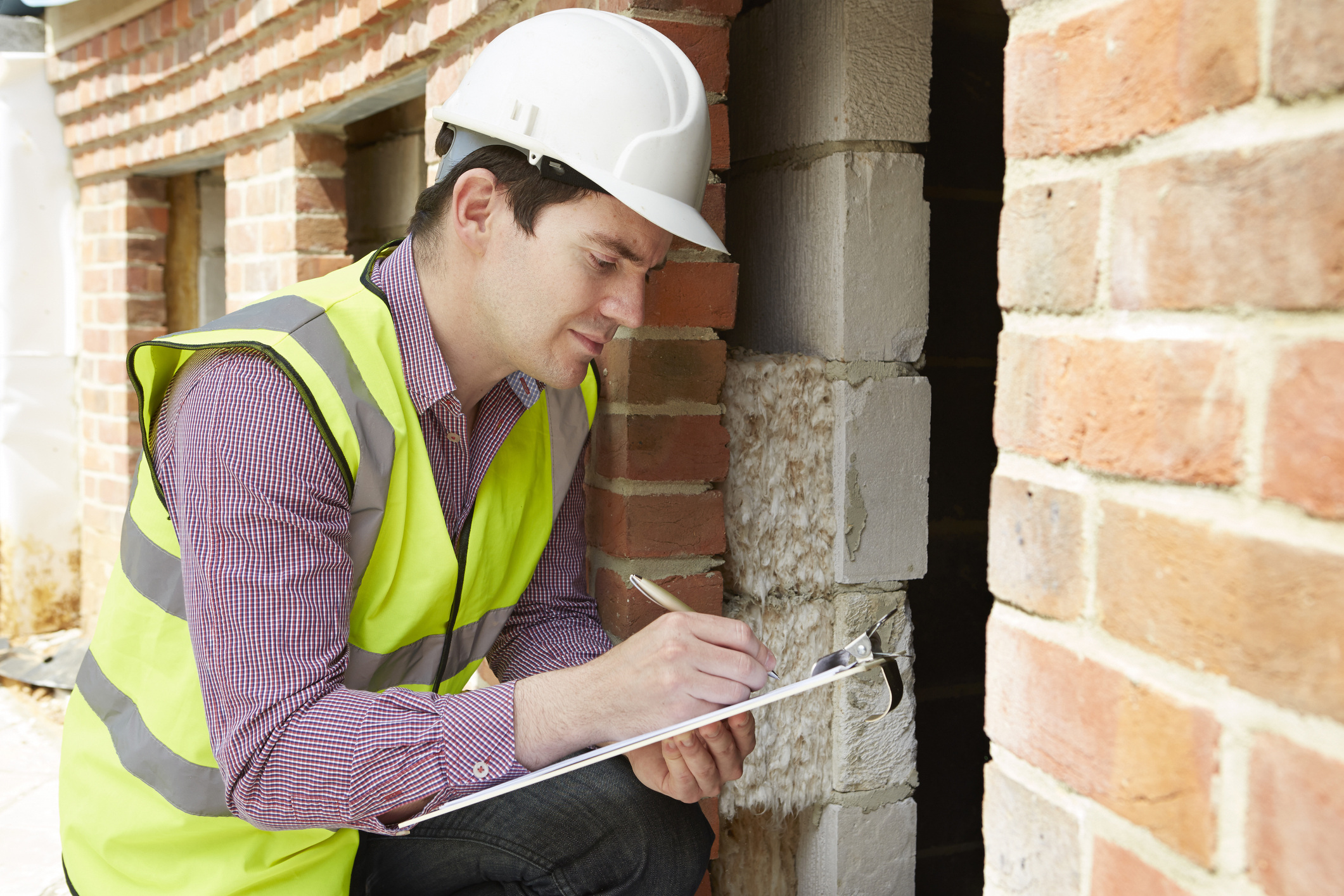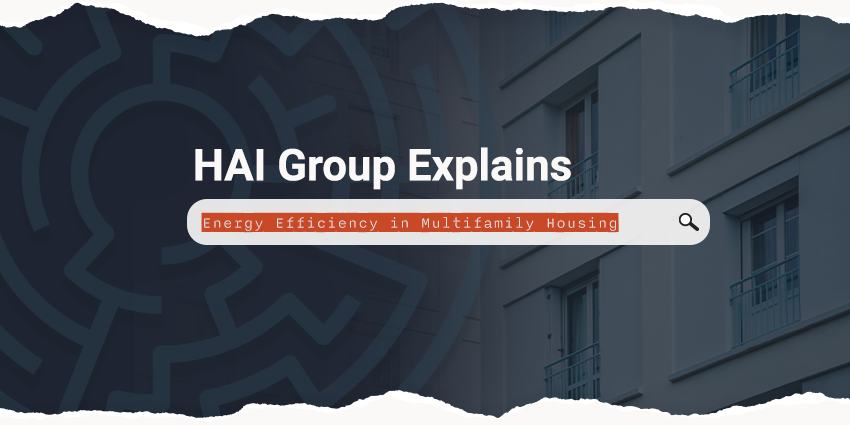Odds are, if you’re in the multifamily affordable housing industry, your to-do list is already frighteningly long. Even so, if you aren’t yet testing for radon, you may want to consider it. Radon is the second-leading cause of lung cancer behind smoking—long-term exposure to the odorless, colorless gas is responsible for around 21,000 deaths in the U.S. each year, according to the U.S. Environmental Protection Agency—and can expose property owners to liability in certain circumstances.
To help you learn more about radon and its impacts, HAI Group’s Amy Hourigan turned to two environmental professionals who have been helping commercial property investors understand and mitigate environmental risk for decades: Elizabeth Sherwood Krol, PG, EP, MBA, CRE, national client director for EBI Consulting, and Michael Walther, senior program director of EBI’s asbestos, lead paint, lead-in-water, mold, PCB, and radon services.

Elizabeth Krol

Michael Walther
Amy Hourigan: Thanks for talking with us, Elizabeth and Mike. Our customers take great care to keep their residents safe. Given that radon presents a major human health risk if it becomes trapped indoors, how often should they test for radon? And is there a legal requirement to do so?
Michael Walther: There’s no law that says a property owner, investor, or other entity must test for radon. However, there is liability for the same due to the potential health effects of elevated radon exposure at the property, and for knowing that a hazard may exist and then not subsequently testing for it. For these reasons, EPA and national standards recommend testing every three years for mitigated buildings and every five years for non-mitigated buildings, as well as after making renovations that impact HVAC systems or the building envelope. If you’re acquiring property, HUD, Fannie Mae, Freddie Mac, and traditional commercial property due diligence all have lending standards that require testing within six months of closing on a property.
Elizabeth Krol: Agreed. From my experience, the trigger to test for radon is when someone is coming in as a new investor or owner, or there’s new financing. Most of the time, the trigger is during that pre-acquisition stage.
AH: Can affordable housing providers safely skip testing if their property is located in an area with a low probability of radon?
EK: Unfortunately, no. Elevated radon concentrations are found in all EPA radon zones. In fact, up to 60% of buildings with elevated radon may be overlooked. [See chart.] Even limited radon testing might not capture everything, so it’s best to be thorough in your testing.

*Data based on a recent, 3-year, HUD-funded project evaluating radon testing policies and standards in multifamily buildings. Image courtesy of EBI Consulting.
MW: EPA developed a Map of Radon Zones in 1993 to identify areas of the U.S. with the potential for elevated indoor radon levels. The goal was to help national, state, and local organizations target their resources and implement radon-resistant building codes. Even so, per EPA, ‘the Map of Radon Zones should not be used to determine if individual homes need to be tested.’ No matter where your building is located, you should be testing.
AH: OK. Do you test the ground floor only?
MW: No. You also have to test a portion of the upper units. EPA published guidelines in the 1990s but later relinquished the authority to develop and enforce radon standards to professional organizations including the National Radon Proficiency Program (NRPP), National Radon Safety Board (NRSB), and American Association of Radon Scientists and Technologists (AARST). The most current radon industry standards, which were published by American National Standards Institute (ANSI)/AARST, recommend testing including, but not limited to, the following:
- Test 100% of ground contact or first-level residential units
- Test 100% of first-level over parking levels or retail
- Test 100% of ground-level retail, office, or other occupied rooms
- Test ALL rooms on the first level that can be converted to “occupied”
- Test 10 percent of each upper floor
- One sample location per residential unit
- For large rooms, one test location per 2,000 square feet
Currently, 20 states have certification requirements, licensing requirements, or both for individuals and firms performing testing, mitigation, or both. Of those 20, 11 states require testing 100% of the ground-floor units prior to performing mitigation at the multifamily facility; testing of just representative units (i.e. 10%) is not permitted per the testing individual’s certification/license. Of these 11 states, only a handful have funding to enforce the state-specific guidelines; the remaining states rely on complaints from the consumer to initiate enforcement.

Image courtesy of EBI Consulting.
AH: How does radon make its way into the upper units?
EK: This is such an interesting question. We just did a presentation for the Environmental Bankers Association about vapor encroachment where we explained that any conduit, even an elevator shaft, basically acts like a plunger to pull vapor up through the building. Radon can also exist in the aggregate used for cementitious products.
MW: Right. Depending on the source of the aggregate, radon can emanate from concrete slabs in the floor and ceiling, on each floor, concrete or cinder block wall, and from other poured or manufactured cementitious products. It’s very common in Florida high-rise buildings. The frequency diminishes as you move north and west of Florida, but it can occur anywhere in the U.S.
AH: That’s interesting. I heard radon can emanate from granite countertops, but I didn’t think about concrete slabs. OK, so what should our readers look for when hiring an assessor?
MW: They should look for an assessor who is certified with either the National Radon Proficiency Program (NRPP) or National Radon Safety Board (NRSB). The assessor should also be certified with AARST as a Multi-Family Measurement (MFM) Professional. Of the states that require radon sampling technicians to be certified, your readers should know that the requirement is as stringent as the requirement for asbestos inspector certification. The 11 states that require AARST-compliant testing—and there are more to come—require certification with NRPP or NRSB as well as AARST.
AH: I’ve heard that qualified radon assessors are in short supply. Will it be difficult for our readers to hire someone to test for radon?
MW: I don’t think so. There is no shortage of certified technicians to do radon testing or mitigation. If Fannie and Freddie pass their standard this year, and it is similar to HUD’s, the demand for radon sampling technicians may outpace the supply. To prepare for this expected increase in demand, EBI Consulting has amply bolstered its population of certified radon sampling technicians.
EK: It’s interesting that you asked that. The end of last year was absolutely bananas for transaction due diligence. There was so much pressure and demand on the overall assessor and third-party resources all over the country and across the entire spectrum. Not just Phase I environmental site assessors, not just property condition assessors, but also surveyors, the people who do zoning, and the people who do other kinds of property-specific work. That part of the third-party due diligence process was absolutely overwhelmed with requests, and it was a very difficult time to get things done, so much so that timelines were actually getting longer. People generally are looking for 15 business days. I’m fortunate because usually, I can give a 10-day, expedited response to our VIP clients, but the industry average was more like 20 to 25 business days, especially for agency work. You’ve probably heard for HUD and for Fannie and Freddie it was four weeks, then six weeks, then eight weeks. I think HUD is even as far out as 10 weeks, so there’s a tremendous backlog. It’s clearing, but people have to reset their expectations a little bit because there’s so much demand. There’s a tremendous amount of pressure on the assessor.
AH: Ah. Good to know. Can you provide a ballpark figure for the cost of a radon assessment? I’ve seen some pretty big ranges, though HUD is helping by making radon grant money available for a short time.
MW: The cost depends on the size and design of the property and buildings as well as the number of residential units. We had testing projects from 20 to 600 samples last year ranging from $2,600 to $30,000. Your readers should know that HUD requires testing per AARST standards. The average property was about $4,500–$5,000 for radon testing per HUD and AARST standards.
AH: Is radon testing for multifamily similar to what you’d do at a single-family property, where you open a canister that collects the air sample? And do you have to enlist tenants’ help?
EK: Right, you leave the canister in the first-floor units and 10 percent of the upper floor units and then collect them after a minimum of 48 hours. If you can get cooperative people on site, whether they’re the tenants or the property manager, and they help with the collection, that can help reduce the cost and some of the handling time, but sometimes tenants aren’t willing participants in the process. Assistance by the property management staff or residents is not permitted for HUD-AARST and will likely not be permitted by Fannie or Freddie in the future.
MW: The testing technology is similar for residential and commercial sites. That said, EBI will soon have access to a patented, proprietary, electronic system that digitally transmits data, eliminates the need for re-testing, and provides results directly to our company without going to a lab. Few other suppliers have access to this technology.
AH: That sounds like a real time-saver. That’s great. Backing up a bit: Before you start testing, are there requirements or best practices for notifying tenants?
MW: AARST and HUD have very specific requirements for notifying tenants. Paper copies of notifications must be delivered no less than 24 hours prior to testing, in applicable language(s). For HUD and AARST, notification of 100 tenants is required—see a sample letter below—and windows in all buildings must remain closed during the testing period.

AH: Does radon testing typically set off alarm bells with tenants?
MW: No. We have not encountered any difficulty from tenants who are informed that testing is being performed to protect them.
EK: Right. Whether it’s for insurance purposes or financing purposes, if you can convey the idea that this is for the betterment of tenants, that helps.
AH: And obviously we hope the data show that radon isn’t an issue. But if it does prove to be a problem, what type of remediation is recommended?
EK: Every remediation plan is customized to the site, so every response is probably going to need to be looked at individually depending on the number of buildings involved, the ductwork, etc. But the idea would be to install a radon mitigation system. There’s a design process to figure out what that system might look like and what would be effective for the property.
MW: Sub-slab depressurization is the most frequently used system. The exception is Florida. In many areas of Florida, apartment pressurization systems must be installed in each unit because the sub-slab systems do not work with the soils there.

How a radon mitigation system works. Image courtesy of EBI Consulting.
AH: Do you typically relocate tenants until the system is in place?
MW: No. Radon health effects are typically associated with long-term exposure. Residing in an apartment with marginally elevated radon for a short period until mitigation is not recognized as a significant additional health threat. Of course, the higher the elevation, the more urgent it becomes to perform the mitigation in a timely manner.

Foundation penetration below slab. Image courtesy of EBI Consulting.

Exhaust piping penetrates the basement slab in the water heater closet of the four-story apartment building pictured below. Image courtesy of EBI Consulting.

Exhaust piping, part of the radon mitigation system installed on this building. Image courtesy EBI Consulting.
AH: Is there a way to tell how long the problem’s been going on?
MW: No, we can only test current conditions. Indoor radon concentrations are known to vary with weather conditions like wind, barometric pressure, precipitation, and temperature, as well as from season to season and with changes to HVAC systems and the building envelope like window and door replacement. Indoor radon concentrations are expected to vary less with unchanged building conditions and the passage of time. There is no expected trend due to structural age.
EK: There might be data from a prior acquisition or investment in an earlier deal cycle perhaps, so there might be some static data from that time period, but I don’t think there’s typically ongoing monitoring.
MW: Right. Ongoing monitoring of the indoor radon concentration is achieved via the recommendation to re-test mitigated buildings every three years. Further, each mitigation system is required to have an active pressure monitoring system, which provides a continual visual determination of whether the system is performing per specifications. These systems can also be equipped with alarms for system failure. Provided the pressure produced by the system remains within the specified range, the indoor radon concentration is expected to be at an acceptable concentration.
AH: That must provide some comfort. Speaking of peace of mind, does the threat of litigation deter people from testing?
EK: It’s a ubiquitous concern, right? Whether it’s vapor encroachment or emerging contaminants like PFAS, I think that’s a constant concern for tenants, for owners, for operators, for insurers, for lenders—everybody involved.
MW: Class-action lawsuits have been won against single- and multifamily homebuilders for not providing a safe indoor radon concentration. Owners and lenders should weigh the risk of bringing attention to the tenant population via testing versus not testing and risking that tenants will become aware, ask questions, and find out that the owner or agents were not protecting tenants proactively.
AH: Food for thought. Thanks for your time today, Elizabeth and Mike. I learned a great deal and I’m sure our affordable housing audience will as well.
EK: Our pleasure. Reach out to us anytime.
MW: Yes, we’re always happy to help.
Contact our Risk Control and Consulting team for more resources and answers to your housing organization's risk-related questions.
Interested in learning more about the coverage solutions we offer? Connect with a member of our Account Services team.
This article is for general information only. HAI Group® makes no representation or warranty about the accuracy or applicability of this information for any particular use or circumstance. Your use of this information is at your own discretion and risk. HAI Group® and any author or contributor identified herein assume no responsibility for your use of this information. You should consult with your attorney or subject matter advisor before adopting any risk management strategy or policy.
HAI Group® is a marketing name used to refer to insurers, a producer, and related service providers affiliated through a common mission, management, and governance. Property-casualty insurance and related services are written or provided by Housing Authority Property Insurance, A Mutual Company; Housing Enterprise Insurance Company, Inc.; Housing Specialty Insurance Company, Inc.; Housing Investment Group, Inc.; and Housing Insurance Services (DBA Housing Insurance Agency Services in NY and MI).







